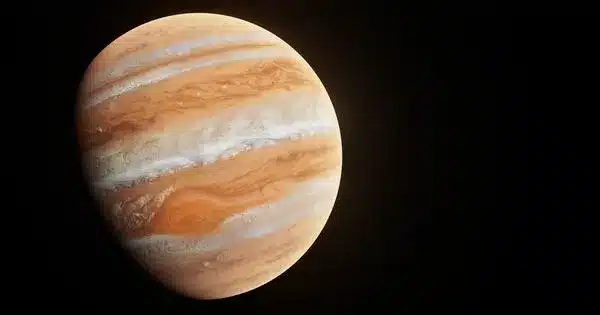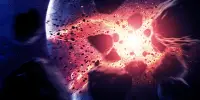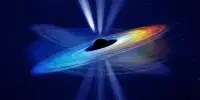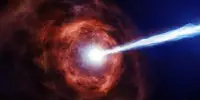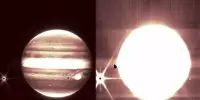Exoplanets are planets that circle stars outside of our solar system, and their discovery contributes significantly to our understanding of planet formation and the diversity of planetary systems in the cosmos. Scientists can learn about the processes and conditions that lead to the development of exoplanets by researching them. An multinational team of scientists has identified an unusual Jupiter-sized planet orbiting TOI-4860, a low-mass star in the Corvus constellation.
TOI-4860 b is a unique gas giant for two reasons: stars of such low mass are not predicted to support planets like Jupiter, and the planet appears to be exceptionally enriched in heavy elements. The study, led by University of Birmingham astronomers, is published in a letter published within the Monthly Notices of the Royal Astronomical Society.
The planet was initially spotted as a decrease of brightness when transiting in front of its host star by NASA’s Transiting Exoplanet Survey Satellite, but that data alone was inadequate to prove that it was a planet.
Under the canonical planet formation model, the less mass a star has, the less massive is the disc of material around that star. Since planets are created from that disc, high-mass planets like Jupiter, were widely expected not to form.
George Dransfield
The scientists used the SPECULOOS South Observatory in Chile’s Atacama Desert to measure the planetary signal in many wavelengths and validate its planetary nature. The astronomers also studied the planet shortly before and after it vanished below its host star, noting that there was no change in light, indicating that the planet was not emitting any. Finally, the team partnered with a Japanese group in Hawai’i, utilizing the Subaru Telescope. They all measured the planet’s mass together to confirm it.
Following this star and confirming its planet was the initiative of a group of PhD students within the SPECULOOS project.
George Dransfield, one of those PhD students, who recently submitted her thesis at the University of Birmingham, explains: “Under the canonical planet formation model, the less mass a star has, the less massive is the disc of material around that star. Since planets are created from that disc, high-mass planets like Jupiter, were widely expected not to form. However, we were curious about this and wanted to check planetary candidates to see if it was possible. TOI-4860 is our first confirmation and also the lowest mass star hosting such a high mass planet.”
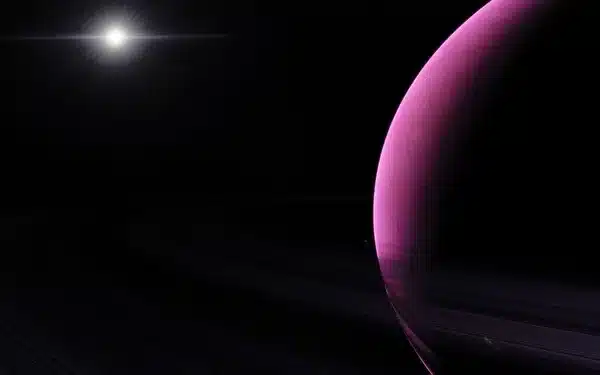
Amaury Triaud, Professor of Exoplanetology at the University of Birmingham, who led the study said: “I am ever thankful to the bright PhD students of our team for proposing to observe systems like TOI-4860. Their work has really paid off since planets like TOI-4860 are vital to deepening our understanding of planet formation.
“A hint of what might have happened is hidden in the planetary properties, which appear to be particularly enriched in heavy elements.” We found something similar in the host star, thus it is likely that an excess of heavy elements aided in the planet formation process.”
The new gas giant takes around 1.52 days to complete a full orbit around its host star, however because its host is a cool low mass star, the planet itself is known as a “Warm Jupiter.” This is a planet subclass that piques the interest of astronomers looking to expand on their preliminary discoveries and learn more about how these types of planets arise.
“Thanks to its very short orbital period and the properties of its host star, the discovery of TOI-4860 b provides a brilliant opportunity to study the atmospheric properties of a warm Jupiter and learn more about how gas giants are formed,” concludes Mathilde Timmermans, another SPECULOOS project student working at the University of Liege in Belgium.
